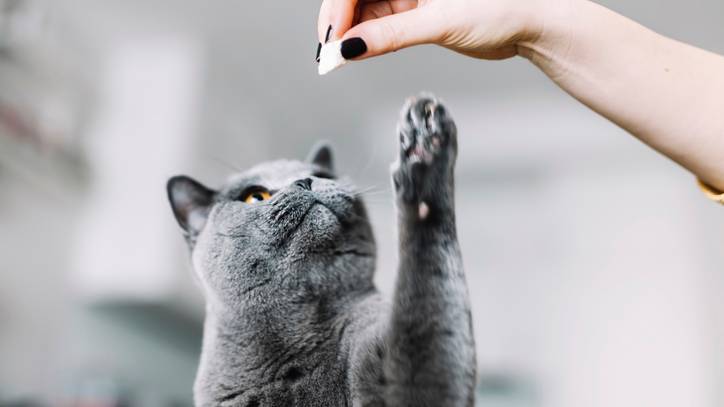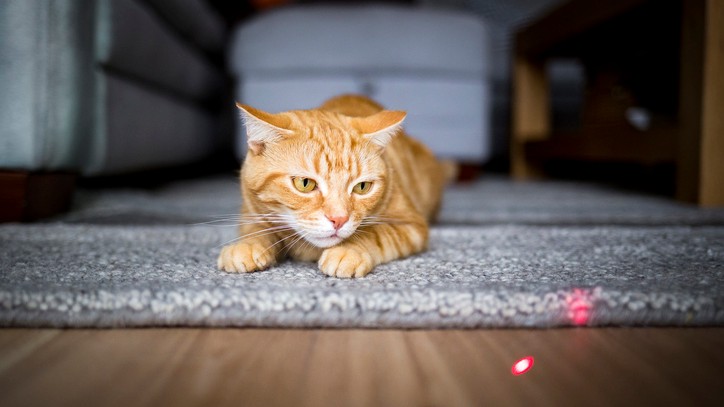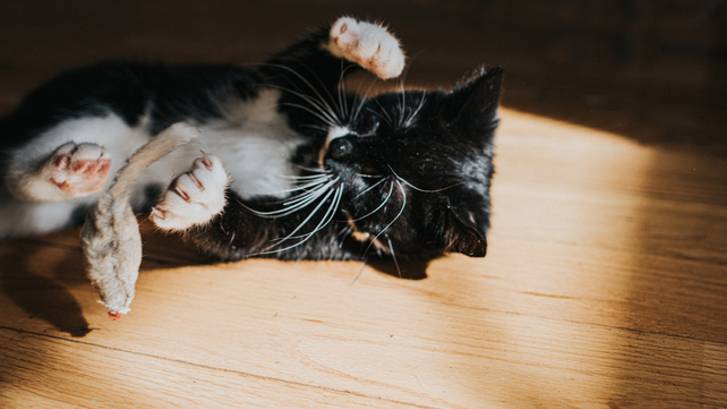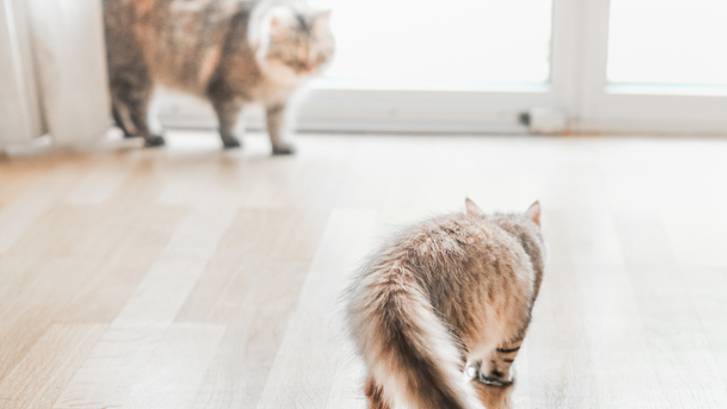My cat won’t play: Is it normal and how to encourage activity
So your cat won’t play – should you be worried about it? We explore possible causes and how you can encourage your pet to be more playful

If your cat won’t play, it’s well worth considering why that could be. Sometimes it could just be a matter of introducing the best cat toys to inspire your cat to move around.
There could be a physical reason such as ill health, age or injury, a psychological reason such as stress or your cat might just need a different form of play.
While felines are generally receptive to their favorite cat toys, if you've noticed that your cat was previously playful but is suddenly lethargic for more than a couple of days, and it's accompanied by other symptoms such as loss of appetite, be sure to consult with your veterinarian for further advice.
Why do cats need play?
Contrary to the perception that our feline friends are aloof or inherently lazy, most cats are naturally playful and need play just like kids do. It helps them to deal with boredom and it helps build bonds between the humans and other cats in the home.
Play stimulates feline brains and also helps them exercise. This is important for all cats but particularly vital for indoor cats to help prevent weight gain.
There’s another important aspect, too. Cats are essentially hunters and have natural play instincts. If you’ve ever seen a kitten unwinding and pouncing on a ball of yarn, you’ll know exactly what we mean!
Cats who can’t or won’t play are missing out on vital mental and physical stimulation and may become bored, overweight or even depressed as a result. A refusal to engage could be a sign of problems.
Get the best advice, tips and top tech for your beloved Pets

Why does my cat not play?
As we’ve already seen, if your cat won’t play it’s definitely worth thinking about the underlying causes:
- Age: Age is a big factor in how curious your kitty is. Kittens and young cats learn about the world through play, so will try and engage with more or less everything. As they get older they become more used to their surroundings and less playful. A gradual tailing off of interest is normal from about the age of 7, but your cat should still remain alert and interested.
- Breed: Some breeds are naturally more energetic than others. If you’re looking for lots of energy in your pet then that’s something to consider when choosing a breed.
- Health: A previously playful puss who’s suddenly gone off her toys might be cause for concern. Keep a careful eye on her, and if her behavior lasts more than a couple of days or is accompanied by other symptoms such as loss of appetite, take a trip to the veterinarian for advice.
- Boredom: Just like humans, cats can grow tired of familiarity and become a bit fickle! Today’s favorite toy might be discarded tomorrow. Keep excess toys shut away and change them every day or so to keep them fresh and interesting. Cats like it best if you join in their play with them, but there are some great laser cat toys on the market if they love to chase movement and you’re too busy to play.
- Energy levels: Cats are crepuscular, which means that their energy levels peak at dawn and dusk. In the middle of the day, they might prefer to stretch out on a sunny windowsill and watch the world go by. If your cat is more playful at certain times of day than others, that’s normal.
- Stress: Cats can be surprisingly sensitive to environment and stress. A rescue kitten often won’t play for a few weeks until she’s grown used to her new home. If your cat has suddenly stopped playing, then think about possible causes. Have you introduced another pet or family member into the household? Have the neighbors got a new, very loud dog? Keep an eye out for signs of anxiety and take a look at our vet's advice on how to calm a cat. It might also be a sign of grief in pets.

Is it normal for a cat not to play?
As detailed above, the answer is ‘possibly’! Older cats and specific breeds may be less interested in interacting. On the other hand, your cat may be feeling unwell or is just not interested in the toy you’re offering. Read on for more advice on how to encourage her to take an interest.
How to encourage a cat to play
Some cats are just too clever for their own good! They know that a stuffed mouse isn’t real, and they’re not going to bother getting off the couch to investigate. There are several tricks you can use here to engage interest.
The first thing to do is establish a routine that works for you both. For example, schedule 10 minutes of playtime as soon as you get in from work so that your cat has an expectation. Then, you need to work out which toys your kitty is most interested in.
You can try a puzzle feeder, which turns feeding time into a game. You can also throw out old, tired toys and replace them with new ones.
Most cats prefer to play with their pet humans rather than on their own, so interactive cat toys where you take part in the game could be a winner. Some cats also love catnip and will go nuts for a scented mouse.

How to encourage a cat to play by itself
While cats generally prefer that their owners be involved in playtime as well, they often need more play than it’s practicable for us to give. Many cats won’t interact with things that don’t move, such as stuffed toys – they need movement to engage their interest.
Sometimes leaving the TV on and tuned to a nature channel works well. You can also consider automated cat toys, some of which can be left switched on and some of which are motion activated by your cat. For safety reasons, always introduce new toys when you’re there in case there are issues.
How to encourage cats to play together
If you’re a one-cat family then getting another cat for company might seem like a great solution. And it might be! Cats won’t automatically interact with each other, though, particularly if there’s a big age difference or your first cat has been used to having life all his own way.
There are lots of ways to encourage cats to get along, but it’s important to take things slowly and not force them together before they’re ready.
At playtime, try interacting with both your cats at the same time. If one refuses to approach while the other is there, then split your time equally between the two. Make sure the more timid of the pair has her own space to retreat to.
With time and patience, the two should start coming forward for playtime together – and gradually progress to playing with each other.

How to encourage cats to exercise
Exercise is a vital part of keeping your cat healthy, particularly if she spends most or all of her time indoors. While playtime with toys is an ideal way of burning calories, there are a few other options as well.
Cats love climbing, so create a safe obstacle with an empty cardboard box or two. You can encourage her to clamber all over and in and out of them by hiding small treats. You could also consider a purpose-made cat tree or cat hammock. We’ve got more great advice on how to get your cat to exercise in our guide.
Now that we’ve discussed the reasons why play is important, you can make an informed decision about your own kitty.
If the refusal to play is a new behavior, there’s probably an underlying cause and you should keep an eye on your cat for any signs they're not their usual self. The first sign of a sick cat is often changes in their appetite.
Play is a great way of bonding with your feline friend, so if your kitty is in good health it's worth persevering and making her see that playtime is fun time.
Read next: How to stop cat play aggression.
Sara is a freelance journalist and copywriter of many years’ experience with a lifelong love of animals. She’s written for a range of magazines and websites on subjects varying from pet care to travel. A horse rider since the age of five, she’s currently a full time pet slave to horse Blue and gorgeous, goofy English Springer Spaniel Olly. Adorable Olly has a huge sense of adventure and no sense of direction, keeping Sara on her toes.

